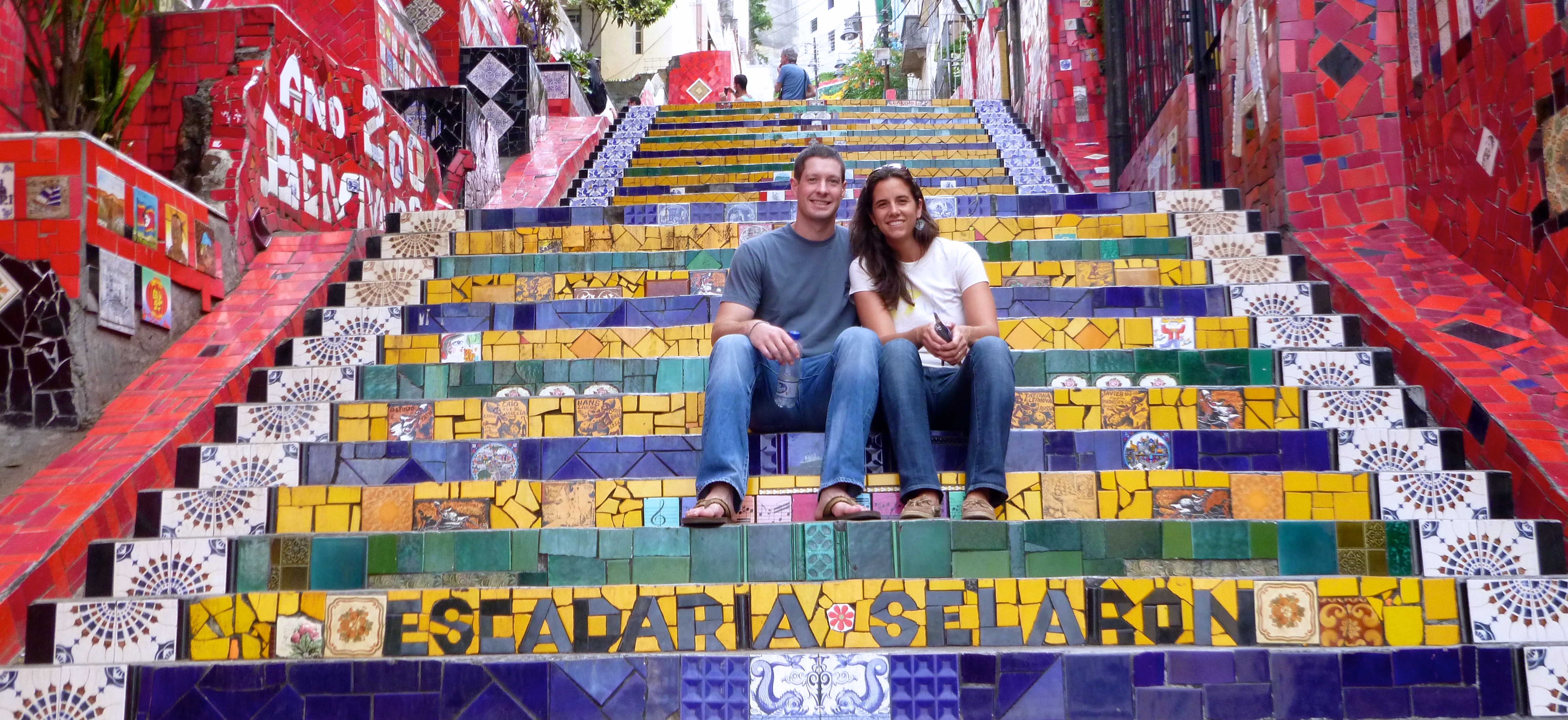By Guest Author Sarah Sanderson
As an undergraduate student at Hope College and even as a graduate student at The Ohio State University, I had no idea that grants such as Fulbright existed. I learned about the Fulbright English Teaching Assistantship (ETA) opportunity while socializing at a hostel during a backpacking trip. At the time, I was 30 years old and teaching English in China with my husband. When I looked into the fellowship eligibility and requirements I thought that my odds were slim because I was older, not in school, married and had already finished a Master’s Degree. I decided to try anyway and I’m very glad I did – my experience with Fulbright has been one of the best experiences of my life and career. My purpose of writing this essay is to encourage other nontraditional candidates to apply and give some tips on how to be successful in the process.
One of the first things to remember about Fulbright is that they ideally want a diverse group of fellows. Think about what’s different about your background and write about how that would be an advantage to the program as a whole. Though originally I thought that being older, married and out of school would hurt me, I think it actually helped me. My ETA cohort of thirty fellows in Brazil in 2013 included one other grantee who was married and still another who was older than I was. Several others had Master’s degrees even though most ETA grants require minimal teaching or tutoring experience. In addition, I thought that applying as an “At Large” candidate (i.e. applying without any affiliation with a university) would put me at a disadvantage but instead I emphasized how my experiences post-college had prepared me for such a role and once again I believe that this made me a unique candidate to add to the group.
A second recommendation about applying for a Fulbright ETA is to focus on a region rather than a specific country. For example, I initially wanted to go to a Spanish-speaking country in South America but after studying the number of grants given for each country I decided on Brazil. At the time, countries like Argentina and Ecuador were only giving out 2-3 grants per year while Brazil awarded 30. Study the yearly statistics report that Fulbright supplies concerning number of applicants and number of awards to make sure that the odds work in your favor. Carefully read each country’s ETA profile and use that to help determine which placement would be a better fit for you as well.
Concerning the application process, give yourself plenty of time and don’t wait until the last minute to submit your entire application electronically. The system has a history of crashing during the final days before the deadline because of traffic and this can cause a significant amount of extra stress and delay. For the statement of purpose, projects that can be done with minimal technology and resources in a variety of environments will be the strongest. For example, my proposal was gathering local realia (objects and material from everyday life) and writing a workbook/teaching guide along with it to create multiple “Culture Boxes” that could be checked out by teachers at local schools and libraries back home. Because I didn’t know exactly where I would be in Brazil or what kind of support would be available to me, this project was strong because it could be feasibly and successfully accomplished anywhere.
It’s also important to remember that Fulbright doesn’t check up on your original proposal or project idea. Once you are awarded the grant and are placed with your host institution, you can (and most people do) change your idea entirely if it makes more sense to do so. Don’t think that what you wrote confines you to any future obligations. Think of the proposal as a way to prove to Fulbright that you know how to design a sound, creative, and practical project that will further mutual understanding and cooperation between nations.
With regards to the personal statement, don’t simply repeat what you filled out in the personal history of the application. Instead, tell a story and highlight other parts of your life and experience that weren’t mentioned previously. In my personal statement I told a story about growing up loving science and solving problems because of my dad who is a science teacher. This emphasized another part of my life that was completely different from what I shared in my application and proposal, namely experience in education and teaching abroad. Lastly, Fulbright wants to see that you can handle living abroad and negotiate cultural differences, be flexible in stressful and confusing circumstances and tolerate uncertainty and challenging living situations. Any stories or examples that show you can thrive in a potentially unstable and constantly changing environment will make you strong candidate. Every year, Fulbright sends people home because they simply can’t handle the stress of living abroad. Showing how you have overcome similar stresses in the past will make the commission much more willing to invest in you.
Above all, your application needs to capture the heart and passion of the purpose of the grant. Read up on the history of Senator Fulbright’s purpose for the fellowship and make sure that your application not only clearly defines how you as an individual would promote mutual understanding and appreciation between people, but why you have a passion to do so. Good luck and don’t be discouraged if you feel like your background will put you behind in the process – it might actually work to your advantage.
Sarah Sanderson was a 2013-14 Fulbright English Teaching Assistant to Brazil and is currently a Rotary International Peace Fellow in Japan. Sarah has an MA in Spanish Linguistics from the Ohio State University.
© Victoria Johnson 2015, all rights reserved.


